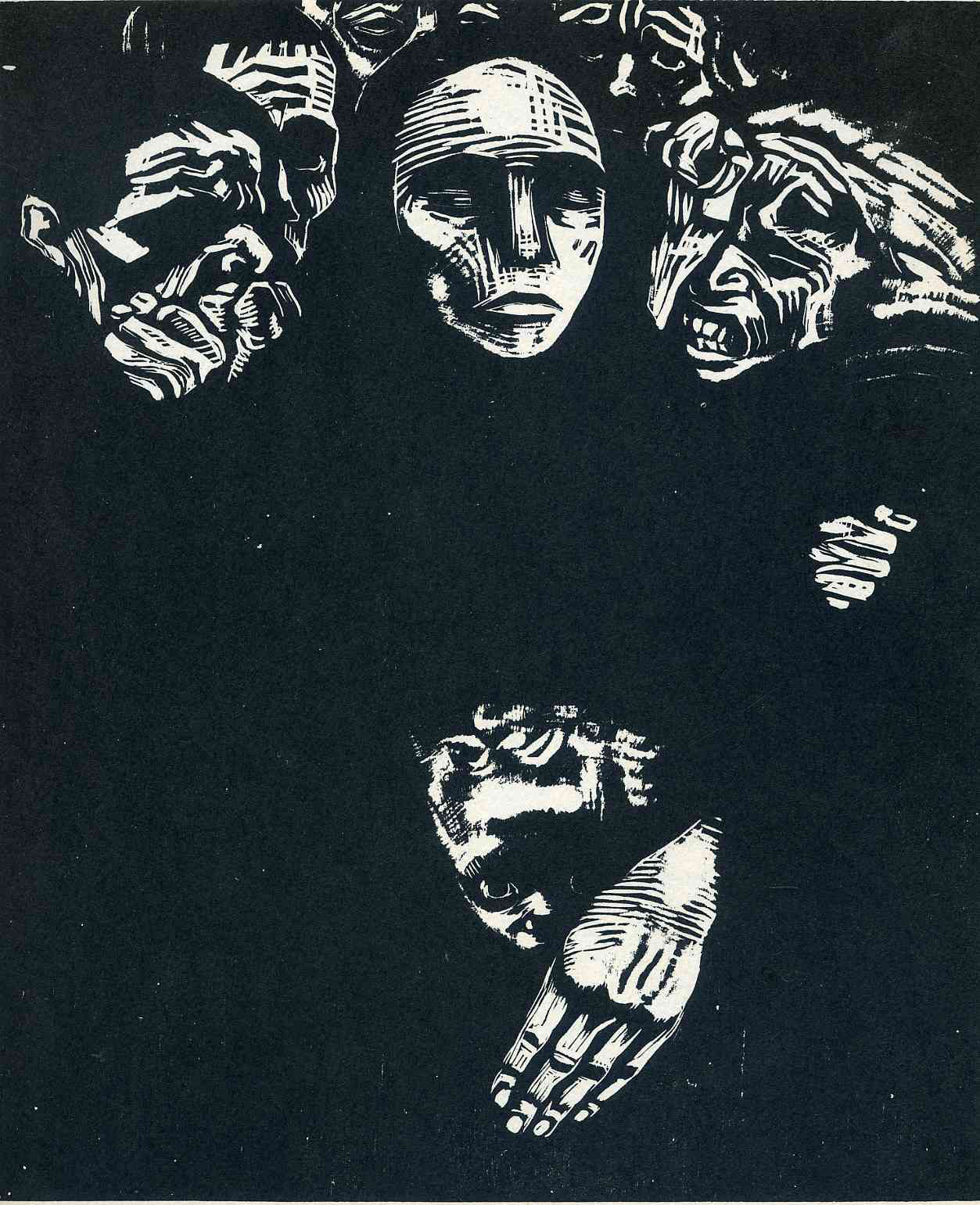< Back |
Our Lady of Protest
Artist: Kollwitz, Käthe (German, 1867-1945)
Title: The People (Das Volk)
1922/1923
Woodcut, touched with white gouache, on japan paper [trial proof] image
1943.3.5229
National Gallery of Art, Washington, DC.
Student Curator Comments:
Das Volk is the culmination of Käthe Kollwitz’s protecting mother motif. It is part of a 7-woodcut series called War (Krieg) which traveled around Germany. She uses woodcut to carve out the strong, angular highlights on the figures, which stand in total darkness. For Kollwitz, this darkness was sorrow. A centralized mother and child take up the majority of the simplified composition. Their stark unity seems iconic and universal. The mother’s face is gaunt. She has sunken eyes and tightly pursed lips, as if she is about to weep. She shields a small child who nervously peers from behind her cloak. Her strong, bony hand in the immediate foreground is as large as the child’s face and is placed immovably in front of him. Behind them huddle five malnourished, aged, and grieving men and women. These figures become archetypes for the German lower-class who faced devastating socioeconomic hardship during World War I.
Kollwitz references the image of the Virgin Mary, referring to her enthroned presence in maestà depictions and her sheltering embrace in images of the Madonna della misericordia to comment on the meaning of sacrifice in World War I. Just as Mary sacrificed Christ for mankind, Kollwitz’s mother sacrificed her sons for Germany. Kollwitz comments that the sacrifice for nation cannot be equated to that of Christ; it was futile and done in the name of a false ideal. Although victimized by war, the mother figure remains strong. She is no longer complicit in an unnecessary sacrifice of life in war, but instead stands against it.





